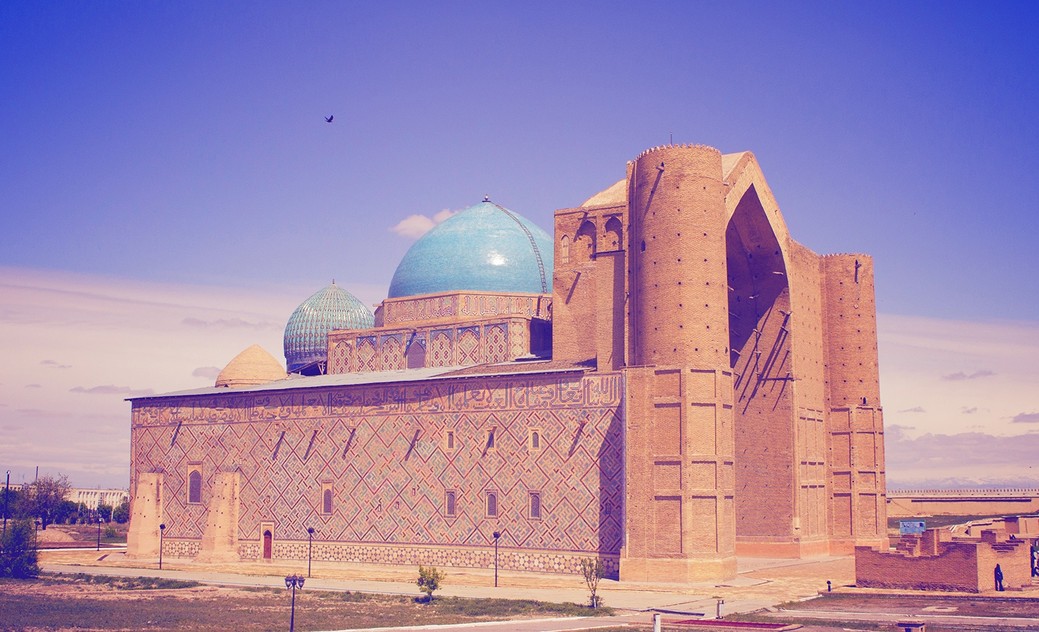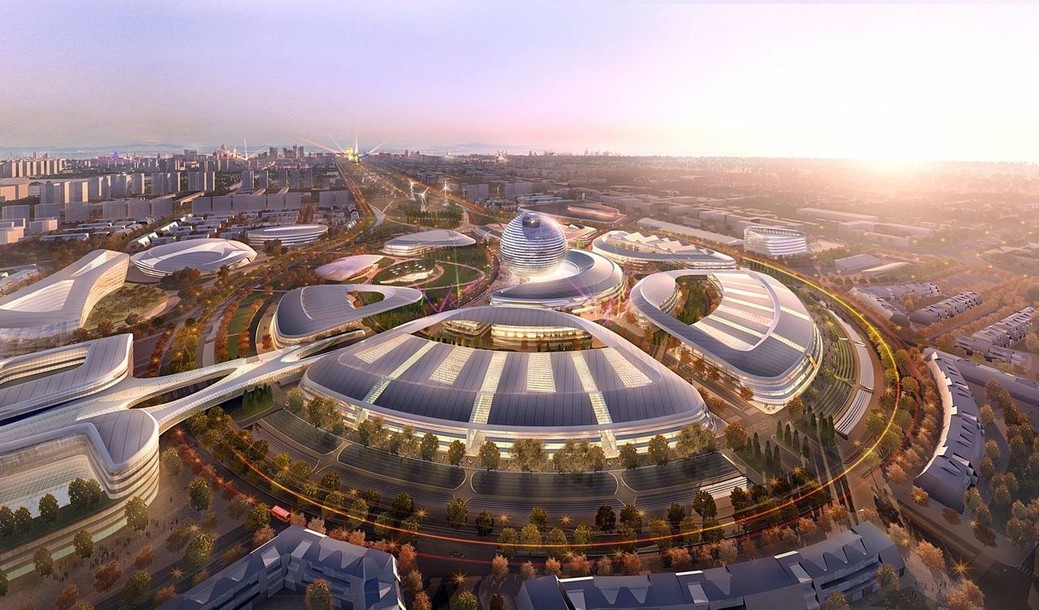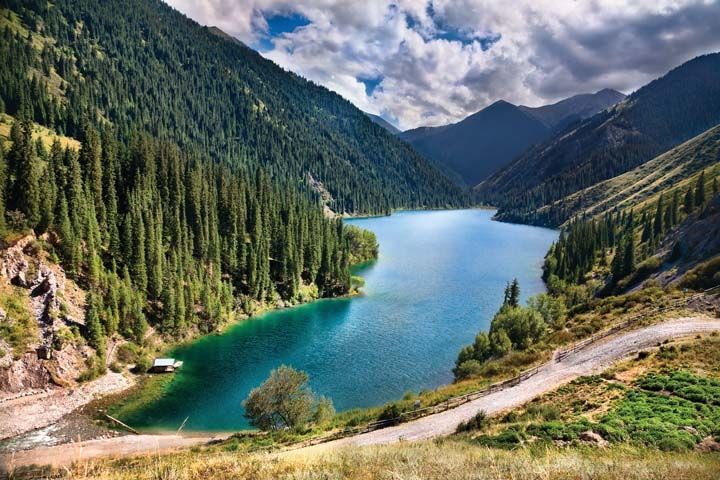
Astana – Modern Wonder of the World
This year, Kazakhstan celebrates its 550th anniversary of statehood. Its rich history dates back to Gengis Khan, the journey of tradesmen and of travelers along the northern route of the Great Silk Road. However, interestingly, the Kazakh capital, Astana, is relatively young. In fact, July 6th marked its 17th year as the capital when it took over the position from Almaty.
The word “Astana” in Kazakh language actually means “capital” and the advantages of the change are that Astana has a large territory, is more centrally located and close to major economic centres. The potential for demographic growth was also in its favour. The decision of President of the Republic of Kazakhstan, Nursultan Nazarbayev, to move the capital from Almaty to Astana was not an easy one. Many people had to be convinced of the need to make Astana the new capital of Kazakhstan.
Today, Astana is recognized as the brainchild of President Nazarbayev and as one of the most successful and ambitious projects of Kazakhstan. It has become the second biggest city in the country and, in fewer than 17 years, its population has tripled to more than 860,000 people.
Astana’s impressive growth reflects the dynamic development of the country as a whole. Since 1991, Kazakhstan’s per-capita GDP has grown almost 20 times from $700 to $14,000. Since 2005, Kazakhstan has attracted a gross foreign direct investment of over $208 billion USD.
Counter clock wise from top left: The Khan Shatyr, The Bayterek Tower, The Palace of Peace and Accord, The Astana Opera.
“Astana was built, in part, to help steer the future ambitions and directions of Kazakhstan as a sovereign nation. The economic impact is hard to miss: the “urbanization” of a country, and economic renewal of the north in terms of industry and surrounding smaller cities, an infrastructure strategy with the resultant thousands of kilometres of planned road and rail and now two airline companies, Air Astana, and Qazag Air” says former ambassador of Canada to Kazakhstan, Ms. Margaret Skok.
Ms. Skok, who was ambassador from 2006-2009, says she clearly remembers the capital in transition: “I remember President Nazarbayev stating in Parliament that Almaty would continue to thrive as a financial centre, and Astana as a government one, – not dissimilar to Toronto and Ottawa, New York and Washington D.C., Berlin and Frankfurt.”

After President Nazarbayev’s 2003 visit to Ottawa, he remarked that all significant capitals are located on “mighty rivers” i.e. Ottawa on the Rideau,Paris on the Seine,and London on the Thames. This inspired him to transform the Ishim River, making it more like a canal and building a beach and a boat house (that bears a striking resemblance to Dow’s Lake) for summer enjoyment while hockey players and cross-country skiers take to the ice during the winter. Elegant residential high-rise buildings now pepper its embankment as well.
“And as the architecture of the city continues to change, so does the architecture of its institutions, spearheaded by market reforms, witnessed by strong export growth and significant FDI into the country. I remain particularly impressed by the young managers in government, academic and private sectors, the strong sense of nationhood, whilst they continue to reach out to new partners, and play an increasing role with respect of the stability and good governance beyond their own borders,” explains Skok, who remains deeply interested in Kazakhstan.
As the political centre of Kazakhstan, the city hosted the first Summit of the Organization of Security and Co- operation in Europe (OSCE) in 2010. It was the first such meeting held since 1999. The Meeting of the Council of Foreign Ministers of the Organization of Islamic Cooperation (OIC) was organized in Astana the following year, thus making Kazakhstan a true destination for international meetings. The year 2017 promises to be significant for Astana as well as the city will be hosting the international EXPO-2017, which coincides with the capital’s 20th anniversary. The theme of Astana’s EXPO is Energy of the Future.
Astana attracts many tourists, especially with its fascinating and grandiose architecture. Canadian historian and architecture expert Dr. Frank Albo, who holds a professorship in History at the University of Winnipeg, has visited Astana several times. “The transformation of Astana into a high modernist capital has assisted in repositioning the Republic of Kazakhstan as a rising global power.”
Ulle Baum, Canadian journalist and photographer, visited Astana earlier this year. She agrees. “This new, ultra- modern city is a symbol of a great vision and shows the state of economy and financial power of the country. I was amazed how the best architects and also the different companies from the world and Kazakhstan were chosen to make this dream come true.”
Famous Japanese architect Kisho Kurokawa drafted the official plan of the city. Various building styles give an impression of a harmonious meeting of Western and Eastern cultures. The new Presidential Palace, Baiterek Tower and Astana Opera House are just a few of the must-see sites in Astana. “The master plan of Astana is a manifesto of municipal principles derived from the golden age of Athens, but wedded to the utopian ideas of Le Corbusier’s ‘Radiant City’ and Kurokawa’s philosophical concepts of urban metabolism and symbiosis. As the model of the future city, Astana formulates a new doctrine of city-planning that actively promotes the ecological preservation of the natural environment,” noted Albo.
The Palace of Peace and Accord was designed by the British architect Sir Norman Foster. It too is a very modern construction with its glass pyramid shape. The Pyramid hosts several permanent exhibitions, including modern and ethnic Kazakh art, but most importantly it is the place of meeting of the participants of tri- annual Congress of Leaders of World and Traditional Religions. The latest 5th Congress took place in Astana on June 10-11, 2015. Kazakhstan, like Canada, is a multicultural country with more than 130 ethnic groups of various religious beliefs. Kazakhstan’s multi-ethnic and inter-religious unity, a driving force behind much of Kazakhstan political and economic progress, is often reflected in the architecture of its capital city.
Astana is a symbol of Kazakhstan as a nation. The city reflects the spirit of creation, development, innovation, peace and the role of Kazakhstan as a place where the West meets the East.











